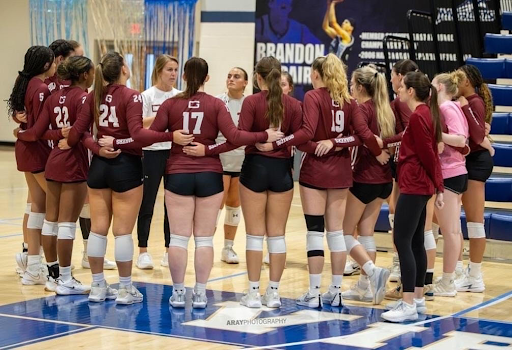When enrollment numbers are dropping fast, what is a school to do?
A decline in enrollment rates is something Guilford College has been struggling with for a couple of years now. As of spring 2015, Guilford has 1,087 traditional students, 783 CCE students and 96 early college students enrolled.
“(Guilford lost) $2.5 million in financial aid,” said Dean of Admission and Financial Aid Administration Andy Strickler. “You’re talking (about) an overall budget of the college somewhere in the neighborhood of $50-55 million dollars. That’s a huge chunk of money and that was financial aid (straight) to the students, so somehow students have to come up with $2.5 million that they didn’t have the year before.”
In 2013 there were 391 new first-year students — by 2014 the number declined by 31 students with a total of 360 incoming first-years.
The decline has not only affected traditional students, but CCE as well. Between spring 2014 to spring 2015, the number of CCE students dropped by 169.
“We’ve lost North Carolina funding,” said Center for Continuing Education Assistant Dean Martee Holt. “We had grant money which was great for adult students — it paid almost a third of their tuition.”
Many liberal arts colleges are struggling financially, not just in North Carolina but also across the states.
In February, Sweet Briar College, an all- women’s college in Virginia, announced that it is shutting down at the end of this academic year due to financial problems. Tennessee Temple University is also shutting down in May and merging with Piedmont International University in North Carolina, both Christian liberal arts colleges.
“I think we need to figure out a way that we can be sustainable,” said Professor of Geology and Earth Sciences Dave Dobson. “That’s what the president is working on this year.”
Another factor in the financial problems of liberal arts colleges is the decline in high school graduates.
“There are fewer students graduating from high school now than there were two years ago, three years ago,” said Strickler.
According to The New York Times, in the fall of 2013 only 65.9 percent of students who graduated from high school enrolled in college, compared to 70.1 percent in 2009.
“Falling college enrollment indicated that upward mobility may become more difficult for working-class and disadvantaged high school graduates,” said economist Heidi Shierholz in an interview with The New York Times.
Both the Federal Academic Competitiveness Grant and Federal National Science and Mathematics Access to Retain Talent Grant, created to encourage high school students to take more challenging classes, that way in college they would be more likely to pursue college majors that would put them in high demanding jobs afterward, have been discontinued since the fall of 2011.
Another contributing factor to the decline in enrollment numbers is retention, or keeping students at Guilford after their first year. However, some of Guilford’s attributes may be pushing students away.
“The campus is very strict about certain rules, which may turn people off,” said first-year Eleanor Pershing in an email interview. “The quiet hours are very restraining and sometimes seem a bit unreasonable especially on the weekends.”
Some students have even decided to transfer from Guilford.
“I decided to leave because I felt that Guilford was not as difficult academically as I wanted,” said former Guilford student Liza Backman. “Part of this is because the school is a little too small. I felt as if the administration didn’t always trust me to be an adult.”
Although some believe Guilford is not up to their standards, others enjoy the College for what it has to offer.
“Guilford was never even on the list of schools I had considered,” said Early College senior and admitted student Sheridan Moser. “That’s the funny thing about Guilford though, all it takes is one step onto the campus and you fall in love.
“I love being surrounded by woods and seeing lots of trees and grass. I love the friendly students who smile back when you pass them on the way to class … when it comes down to it, it just felt right.”
The more admitted students the school enrolls, the better chance it has of surviving the financial issues.
“Enrollment’s our life line,” said Strickler. “The most powerful force that we have in helping to assist us enroll students are our current students.”
While admissions believe current students are an important key to helping Guilford’s enrollment rates, some students think the College’s quirkiness is significant as well.
“If we maintain that sense of individuality and uniqueness, that every student is special and we maintain our diversity … students will continue to want to come here,” said first-year Danika Gottbrecht.
Despite Guilford’s budget struggles, President Jane Fernandes remains optimistic about the outcome.
“Our goal is to build a strong financial base for Guilford,” said Fernandes in an email to alumni. “To emerge from the current challenge in a stronger position, we must make strategic investments in our vision of Guilford as a small college of excellence doing a few things splendidly.”




